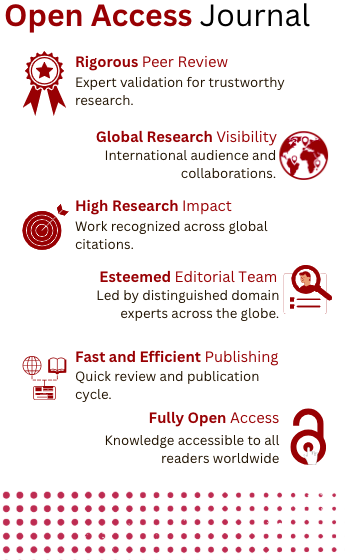Solar drive-in EV charging hub
DOI:
https://doi.org/10.5281/zenodo.7937942Keywords:
EV Charging, GSM, Electric vehicles, charging hubAbstract
While electric vehicles are generally seen as clean vehicles, The concept of using solar power to charge electric vehiclesis a significant step towards achieving a truly sustainable and environmentally friendly transportation system. Whileelectric vehicles themselves are cleaner than those powered by fossil fuels, the production of electricity used to charge them can still result in emissions. The current solar energy ecosystem in India is not well-structured, with numerous solarpower plants operating independently without any means of analytical analysis. However, advancements in sensor technology make it possible to connect these systems to the GSM and carry out analytical operations to improve efficiency. By connecting solar-powered electric vehicle charging stations to the GSM, users can receive messages about the performance, productivity, and efficiency of the stations. This information can then be used to optimize the use of solar power and increase efficiency, ensuring that solar power is maximized in charging electric vehicles.References
Akhila.A (2019)5th International Conference on Advanced Computing & Communication Systems (CACCS). Charging Station for E-Vehicle using Solar with IoT.
Chinnammai, S. (2013). An economic analysis of solar energy. Journal of Clean Energy Technologies, 1(1), 72-74.
Ahmed, S. T., Basha, S. M., Ramachandran, M., Daneshmand, M., & Gandomi, A. H. (2023). An Edge-AI enabled Autonomous Connected Ambulance Route Resource Recommendation Protocol (ACA-R3) for eHealth in Smart Cities. IEEE Internet of Things Journal.
Basha, S. M., Ahmed, S. T., Iyengar, N. C. S. N., & Caytiles, R. D. (2021, December). Inter-locking dependency evaluation schema based on block-chain enabled federated transfer learning for autonomous vehicular systems. In 2021 Second International Conference on Innovative Technology Convergence (CITC) (pp. 46-51). IEEE.
Garro, A. (2011). Reliability Analysis of Residential Photovoltaic Systems. In International Conference on Renewable Energies and Power Quality (ICREPQ'11), Las Palmas de Gran Canaria, Spain.
Microsoft Embedded Conference. (2014). Smart Home and Smart Factory Systems.
Zhang, H., Li, J., Zou, Y., Li, Y., & Peng, F. (2020). A review on solar-powered electric vehicle charging infrastructure. Renewable and Sustainable Energy Reviews, 130, 109931. doi: 10.1016/j.rser.2020.109931.
Ahmed, S. T., & Basha, S. M. (2022). Analog Electronic Circuits: Principles and Fundamentals. MileStone Research Publications.
Youssef, A. E., Mohamed, A. M., Aboelenin, S. R., & Ahmed, S. M. (2020). Design and optimization of a solar-powered charging station for electric vehicles. IEEE Access, 8, 14791-14806.
‘Google Cloud Platform.’ In Wikipedia. The free Encyclopaedia. Wikimedia, Retrieved January 17, 2015, from https://en.wikipedia.org/wiki/Google_Cloud_Platform
‘MapReduce.’ In Wikipedia. The free Encyclopaedia. Wikimedia, Retrieved January 17, 2015, from https://en.wikipedia.org/wiki/MapReduce
Downloads
Published
How to Cite
Issue
Section
License
Copyright (c) 2023 Shashi Rekha G, Rohith S, Sanjana Patil, Srushti K S, Vinutha D S

This work is licensed under a Creative Commons Attribution-NonCommercial-NoDerivatives 4.0 International License.







